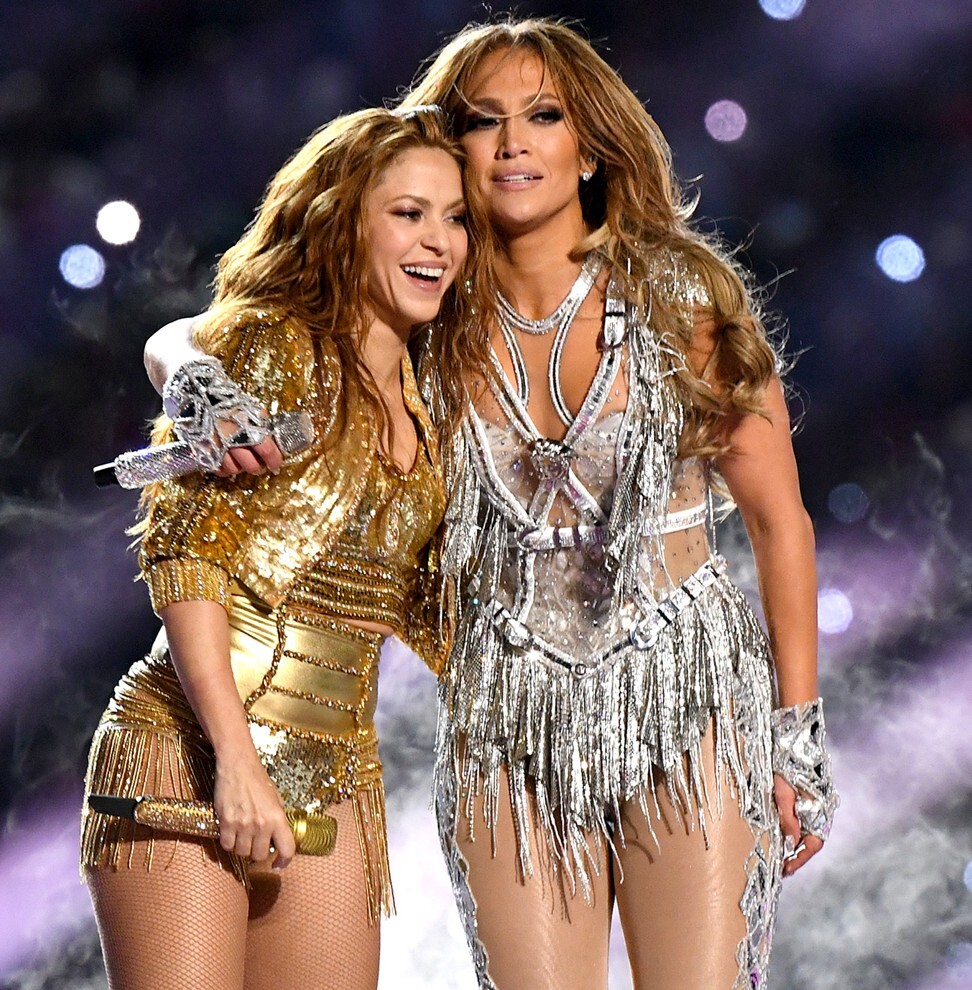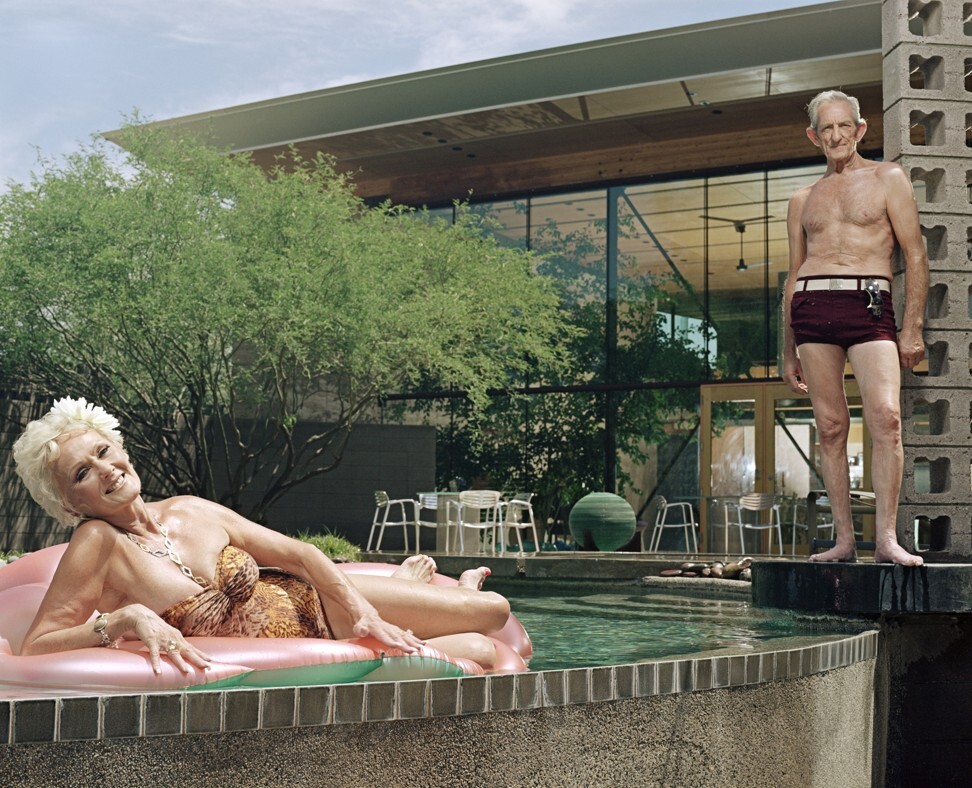
Health and wellness companies target boomers – fit, active and the healthiest ageing 50-plus generation ever
- Perceptions of ageing are changing rapidly; as Jennifer Lopez showed in her Super Bowl halftime show, for many life really does begin at 50
- Many advertisers don’t see baby boomers as young at heart, but shrewd players in the wellness industry see there’s money to be made in the ‘silver economy’

It is an undeniable fact of being alive that we must all age and – brace yourselves – die. Growing old is part of the human condition, and in our ageing, we are all united: a postal worker in the US Midwest ultimately faces the same fate as William Shakespeare and Xi Jinping. Or do they?
While nobody is seriously claiming that immortality is reasonable to expect, many experts and entrepreneurs are finding that the current generation of the middle-aged is making history, growing old in ways that nobody dared to, nor could before them.
“The baby boomers are simply refusing to age in the ways that people had to before,” says Beth McGroarty, vice-president of research and forecasting for the Global Wellness Institute and the Global Wellness Summit.
Don’t believe us? Well look no further than this year’s much tweeted-about Super Bowl halftime show. In between American football halves, Jennifer Lopez and Shakira performed a breathtaking, pyrotechnic, Latin-inspired song and dance routine, working up a sweat and, judging from the reaction online, driving at-home viewers into a sort of frenzy.

Lopez, who is 50 years old, and Shakira who is 43, inspired a veritable parade of think pieces in the days following their performance. There was “J. Lo and the Power of 50” in The New York Times, and “Jennifer Lopez and the Invisibility of Middle Aged Women” on Jezebel, and then there was Buzzfeed’s more pointed “Congrats To Everyone Who Realised Older Women Are Hot.”
It’s that last one that most gets at the change happening around ageing. Of course, J. Lo and Shakira look good; if you had their millions of dollars and dedicated trainers you could look pretty good too. It’s that the perception of ageing is changing. To borrow a phrase increasingly common in the world of ageing: ageing is being rebranded.
Baby boomers, that generation sandwiched between Gen X and the “Silent Generation” born between 1946 and 1964, are increasingly being seen as more fit, attractive and competent than people of the same age in generations past.
There is some truth to this; advances in medical technology, as well as decreases in unhealthy habits such as smoking, drinking alcohol and unhealthy eating have arguably made the baby boomers the healthiest and longest living generation ever.
“If you’re a woman in your 50s, you’re reasonably healthy, you have some education, there’s a pretty good chance you’re halfway through your life. And never before in history has that been the case,” says David Harry Stewart, the chief executive and founder of Ageist, a Los Angeles-based media company and consulting firm focusing on older markets.

“And that affects somebody’s perception of their place in the world. If I’m 50, then I have a life 2.0. I have a do-over sitting in front of me and what am I going to do with it? That’s very different from the old view that 60 is game over; 55 is time to wind it down, and 70 I’m dead.”
Not only are older people living longer, but there are also more of them. The World Health Organisation (WHO) predicts the 60-plus population will nearly double by 2050 from 12 per cent to 22 per cent. That’s nearly a quarter of the world’s total population. And they are also, to put it bluntly, rich.
“We’re just seeing an unprecedented demographic shift towards living longer and baby boomers having all kinds of money,” says McGroarty.
In developed ageing countries like the United States, baby boomers control the highest percentage of disposable income. And – approaching retirement age, presumably ready to treat themselves – they are not afraid to spend. According to Nielsen, boomers account for a huge US$230 billion in consumer goods in the United States every year. All those dollars amount to what is known as the “silver economy”, an incredible opportunity for enrichment that companies are racing to take advantage of.

“It’s a different kind of 55 to 60-plus person than we’ve ever seen before, who is heavily invested in all kinds of health and wellness,” says McGroarty.
Wellness and health companies and start-ups have inevitably been at the forefront of the companies targeting ageing consumers, specialising in everything from home diagnostic tech to mobile games which claim to ward off dementia to robots programmed to care for the elderly and keep them company.
Despite all the dollars up for grabs, companies, especially those outside the health and wellness space, have found it more difficult than anticipated to cash in on the silver bonanza.
In his first career, Stewart worked for 35 years as a photographer.
“I used to live in Paris. I worked for all the big magazines. And I also did probably 1,000 advertising campaigns,” he remembers.
Why is it that nothing is being aimed at people like us? We’re healthy, we’re vivid, we’re culturally connected and we have money – and we’re being ignored
“When I was working as a photographer in my mid-50s, it was interesting to me that I was getting older but the people I was taking pictures of were staying the same age. And the people who were being portrayed in the media who were my age, we were all being portrayed like there was something terribly wrong with us. Like we needed immediate medical attention.”
Old habits, especially in the world of advertising, die hard.
“I think the wellness world has been so myopically obsessed with millennials and now that’s really going to shift,” says McGroarty. “This is going to change every market.”
Anyone who has watched television on a weekday afternoon, a time when advertisers are eager to court retiree viewers, knows first-hand just how stuck in the past those same advertisers can be. Commercials targeting younger consumers show attractive people having fun, being active outdoors, or travelling.
Commercials aimed at an older crowd are often limited, low-budget productions featuring talking heads sitting comfortably indoors extolling the virtues of catheters or selling the “excitement” of going to a store on a brand new personal mobility device. Practical, perhaps, but certainly not glamorous, and not likely to appeal to the active, fit boomers who are likely to spend the most money – a population more interested in say, white water kayaking than a scooter ride down to the shops.
There is a statistic you hear often in this world: that 40 per cent of Americans are over the age of 50, but only 4 per cent of people are in marketing. It’s not just that marketing companies are out of date; boomers are a remarkably difficulty demographic to get right. They’re such a broad and diverse group.

The baby boomer generation spans 18 years, and the difference in needs between someone born in 1946 and 1964 can be immense. Even within the same age group, everybody ages differently. One 70-year-old may own their own company, and be in the best shape of their life. Another may be facing serious health problems, diminishing cognitive ability and even issues with personal mobility. There is just no good one-size-fits-all approach to courting the boomer market.
Still, companies and advertisers could do much more.
“Why is it that nothing is being aimed at people like us?” Stewart wonders all the time. “We’re healthy, we’re vivid, we’re culturally connected and we have money – and we’re being ignored.”